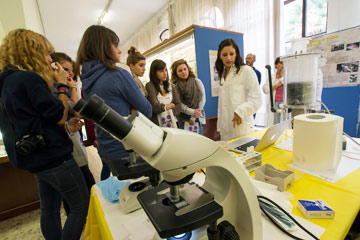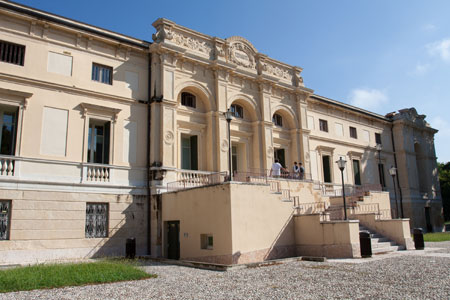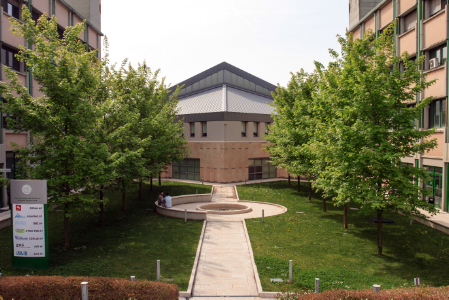Learning outcomes
Module: FISIOLOGIA DEI SISTEMI COMPLESSI
-------
The student will learn the molecular mechanisms that underlie integrated functions, with particular regard to those performed by excitable and endocrine cells. The student will be able to describe and interpret the energy transformations and the structural correlates subtending the physiological processes at the different levels of organization, to understand and generalize the signaling mechanisms for the integration and the homeostatic control of physiological variables.
Module: ELABORAZIONE DEL SEGNALE
-------
During the course we will examine the main methods for data collection and signal processing used in basic and applied physiological research, as well as the theoretical reference models. With particular regard to the domain of cognitive neuroscience, we will consider different experimental contexts and for each some real study cases will be discussed.
Syllabus
Module: FISIOLOGIA DEI SISTEMI COMPLESSI
-------
• Cardiovascular System: Features and functions of systemic and pulmonary circulation. Features and functions of the vascular system. Mechanical activity of the heart. Adjustment of cardiac output. Regulation of systemic blood pressure.
• Respiratory System: Mechanics of breathing. Gas exchange in lungs and tissues. Transport of oxygen and carbon dioxide in the blood. Regulation of breathing.
• Renal system: Glomerular ultrafiltration. Tubular reabsorption and secretion. Regulation of the composition of extracellular fluid. Regulation of acid-base balance.
• Nervous system: Peripheral and central nervous system. Sensory system: receptors, transduction, "specific nerve energies." Sensory units. Encoding of location, intensity and duration. Somatic sensibility: receptors, spinal systems, morphofunctional organization of the cortex. Vision: references to physics and physiological optics, refractive errors, visual field, structure of the retina, phototransduction, organization of receptive fields in the retina, subcortical projections, morphofunctional organization of the cortex. Hearing: references to physical acoustics, travelling wave, transduction in hair cells, central pathways, organization of the cortex. Motor system: reflex arc. Spinal reflexes. Superior control of reflex activity. Descending brainstem pathways and corticospinal tract. Organization of motor and premotor cortex. Autonomic nervous system. Effects of ortho- and parasympathetic stimulation on various organs.
• Endocrine System: Integration of hypothalamic and limbic system. Relationships between the hypothalamus and the pituitary gland. Posterior and anterior pituitary hormones. Hormones of the thyroid, parathyroid glands, adrenal gland and pancreas.
Module: ELABORAZIONE DEL SEGNALE
-------
• Analysis of behavioral indexes – Fundamentals of psychometrics: Psychometric curves. Signal Detection Theory (SDT). Receiver Operating Characteristic curve (ROC). Discriminability index d’ and criterion β.
• Analysis of behavioral indexes – Eye movements: Recording and analysis of eye movement data. The experimental contexts in which eye movements should be measured. Saccade detection. Exploration of complex scenes.
• Psychophysiological indexes: Skin conductance response. Cardiovascular and respiratory reactions. Pupillary responses.
• Electroencephalogram (EEG) and event-related potentials (ERPs): Signal recording and data processing. Spectral analysis. Source localization. Visual evoked potentials (VEPs) and component analysis.
• Single and multi-unit recording: The action potential. The electrode. Discrimination of action potentials. Local field potential (LFP). Interactions between neurons and areas: correlation and coherence analysis.
Assessment methods and criteria
Module: FISIOLOGIA DEI SISTEMI COMPLESSI
-------
The examination will be in oral form following a written assessment in the form of multiple-choice and short open questions.
Textbooks
Conti, FISIOLOGIA MEDICA, 2a edizione. Edi-ermes, Milano, 2010
Berne&Levy, FISIOLOGIA, 6° edizione. Casa Editrice Ambrosiana, Milano, 2010.
Module: ELABORAZIONE DEL SEGNALE
-------
Oral examination







